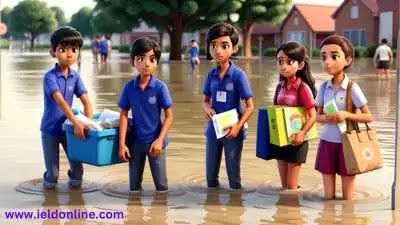Write two passages on "Students' Responsibility towards the Community"--one has to be fact-based and another one has to be opinion-based.
Facts
Edward Zlotkowski explores the difficulties and possible future paths of service-learning in "Does Service-Learning Have a Future?" (1999). His research highlights how important it is to have constant conversations about how to make service-learning programs better and more efficient so that they may continue to be relevant in producing law-abiding, civic-minded individuals.
According to James Youniss and Miranda Yates' "Community Service and Social Responsibility in Youth" (1999), youth civic involvement is a crucial component of community duty. Their work emphasizes how students' active involvement in community activities not only helps them develop a feeling of responsibility but also helps them become knowledgeable and involved citizens.
Robert D. Reason raises the issue of higher education institutions' social obligation in "The Social Responsibility of Business and Higher Education" (2005). Reason contends that education emphasizes social and ethical aspects that go beyond academic success and encompass a larger commitment to societal well-being.
In his seminal essay "Democracy and Education" (1916), John Dewey emphasizes the importance of integrating citizenship education into the educational framework. According to Dewey's concept, education should actively involve students in creating a democratic society in addition to preparing them for personal success.
"The Impact of Volunteering on Nonprofit Organizations" by Mark D. Musick and Mary W. Hudson (1999) examines how student volunteering affects nonprofit organizations. Their study emphasizes how much students can do to improve communities and make social initiatives successful by volunteering their time.
The concept of "good work" as presented by Howard Gardner in "Good Work: When Excellence and Ethics Meet" (2001) highlights the point at which student activities interact with ethics and excellence. By participating in morally-driven activities, students demonstrate the ethical side of their responsibilities and make a good impact on society.
An international perspective on civic education can be found in "Civic Education Across Countries: Twenty-four National Case Studies from the IEA Civic Education Project" by Judith Torney-Purta, John Schwille, and Jo-Ann Amadeo (1999). Their worldwide viewpoint highlights how crucial it is for students to have a sense of responsibility and to be conscious of their place in both local and global communities.
To sum up, the various perspectives presented by credible writers highlight that students have a holistic obligation to the community that encompasses education, morality, and engaged civic engagement. Developing and fostering this sense of accountability is crucial to producing engaged and socially conscious people.
Bibliography
Eyler, J., & Giles Jr., D. E. (1999). Where's the Learning in Service-Learning? Journal of Higher Education, 70 (2), 294–318.
Zlotkowski, E. (1999). Does Service-Learning Have a Future? Michigan Journal of Community Service Learning, 6 (1), 123–135.
Youniss, J., & Yates, M. (1999). Community Service and Social Responsibility in Youth. The Journal of Early Adolescence, 19 (3), 187–201.
Reason, R. D. (2005). The Social Responsibility of Business and Higher Education: Higher Education's Ethical Compact with Society. Change: The Magazine of Higher Learning, 37 (6), 29–35.
Dewey, J. (1916). Democracy and Education. The Macmillan Company.
Putnam, R. D. (2000). Bowling Alone: The Collapse and Revival of American Community. Simon & Schuster.
Musick, M. D., & Hudson, M. W. (1999). The Impact of Volunteering on Nonprofit Organizations. Nonprofit and Voluntary Sector Quarterly, 28 (4), 398–423.
Gardner, H. (2001). Good Work: When Excellence and Ethics Meet. Basic Books.
Torney-Purta, J., Schwille, J., & Amadeo, J.-A. (1999). Civic Education Across Countries: Twenty-four National Case Studies from the IEA Civic Education Project. International Association for the Evaluation of Educational Achievement (IEA).

